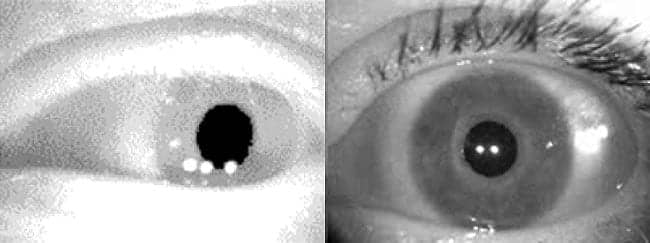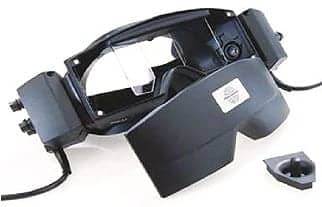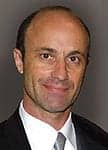Incorporating FireWire into VNG protocols is an exciting development that is designed to improve significantly the efficacy and pragmatic analysis of eye movements as related to balance disorders.
Electro-nystagmography (ENG) essentially measures and records nystagmus using electro-oculography techniques to help determine whether the vestibular system is responding to various provocative stimuli normally. The essential clinical ENG protocol has been employed clinically for about 60 years.1 ENG is dependent on surface electrodes detecting changes in the corneo-retinal potential around the eyes.

|

|

|
| This article was submitted to HR by Douglas L. Beck, AuD, director of professional relations at Oticon Inc, Somerset, NJ; Michelle Petrak, PhD, director of clinical audiology at Interacoustics, Assens, Denmark; and Cammy Bahner, MS, clinical support audiologist at Interacoustics, Minneapolis. Correspondence can be addressed to HR or Douglas Beck at . | ||
Video-nystagmography (VNG) is a well-regarded and important upgrade of the standard electro-nystagmography test protocol used in the clinical analysis of vestibular function. VNG uses infrared cameras to allow direct and accurate measurement of eye movements in complete darkness. It facilitates improved recordings, measurements, and analysis of nystagmus and other involuntary eye movements.
McCaslin and Jacobson2 report VNG advantages include VNG goggles that take just a few seconds to place on the patient and VNG recording systems that have a very low noise floor. Additionally, VNG systems allow the entire test protocol and response to be recorded for later analysis.
Like ENG, VNG protocols are typically divided into four sub-test sections:
1) Ocular Mobility Tests in which the patient attends/follows smaller objects or lights (through volitional eye movement) to determine the speed and accuracy of eye movements;
2) Optokinetic Nystagmus Tests in which the patient tracks large moving stimuli;
3) Positional Nystagmus Tests provide an analysis of nystagmus in response to various head positions; and
4) Caloric Tests provide an analysis of nystagmus in response to cool and warm stimulation within the ear canal.
Saccades: Fast and Dynamic
In healthy balance systems, saccades support gaze stabilization by “instantly” directing and redirecting visual images onto the fovea, the area of the retina with maximal neural receptors. This is responsible, in part, for detail and accuracy in our vision.
Saccadic activity can be extremely fast and extremely tiny, rendering it very difficult to observe, record, or capture. Baloh and Honrubia3 noted eye velocity can exceed an angle of 400° per second, which makes saccades the fastest type of eye movement. Further, micro-saccades are active and dynamic components of eye movement and appear to play an increasingly important role in gaze stabilization,4 as well as visual continuity and analysis.5
FireWire Technology
Beyond the many benefits of VNG-based recordings and analysis, another major development has recently been applied to the clinical analysis of vestibular function: the application of “FireWire” to VNG.
FireWire® technology facilitates an extremely fast transfer of electronic information between multiple digital devices. Although FireWire can be used to transmit audio and video data, it is particularly beneficial with regard to video information, such as VNG. FireWire has been incorporated into the infrared recording cameras, as well as the cables, allowing recordings that approach real-time (or almost instantaneous) speeds.

FIGURE 1. On left, a typical 60 Hz VNG recording; on right a 105 Hz FireWire® VNG recording.
Previous 60 Hz systems allowed a video resolution of 640 x 120 pixels in the binocular mode; FireWire allows almost double the vertical resolution in binocular mode (640 x 240 pixels) via the Interacoustics 105 Hz system (Figure 1). Thus, eye movements (saccades) are captured more precisely and the visual resolution is tremendously improved. Importantly, in binocular mode, the 105 Hz system provides 75% more data to analyze, and in monocular mode, the 174 Hz system would present 290% more data.

FIGURE 2. VNG Combi Goggle.
ADDITIONAL READING:

“Overview of BPPV: Pathophysiology & Diagnosis,” by Richard Gans, PhD, in August 2000 issue of HR.
VNG Goggles
The Interacoustics VO425 VNG Combi goggles use a proprietary eye tracking algorithm based on an ellipse. The ellipse is located at the edge of the pupil allowing improved tracking when the eye is partly closed and when the available light is unevenly distributed. Interacoustics Combi goggles contain FireWire-based cameras for maximal video transfer speed and the highest visual quality.
Discussion
Incorporating FireWire into VNG protocols is an exciting development that is designed to improve significantly the efficacy and pragmatic analysis of eye movements as related to balance disorders. In the American National Standards Institute (ANSI) document for testing basic vestibular function,6 a sample rate of 100 Hz is advocated. FireWire allows clinicians to surpass the ANSI recommendation, thus facilitating superior visual analysis of saccadic and related activity, as compared to previous sampling rates that ranged from 30 to 60 Hz.
References
- Hall JW, Mueller HG. Vestibular assessment and rehabilitation. In: Audiologists Desk Reference. Vol I. San Diego: Singular Publishing Group; 1997:646.
- McCaslin DL, Jacobson GP. Current role of the videonystagmography examination in the context of the multidimensional balance function test battery. Semin Hear. 2009;30(4):242-253.
- Baloh RW, Honrubia V. Clinical Neurophysiology of the Vestibular System. New York: Oxford University Press; 2001.
- Rolfs M. Microsaccades: small steps on a long way. Vision Research. 2009;49(20):2415-2441.
- Hafed ZM, Goffart L, Krauzlis RJ. A neural mechanism for microsaccade generation in the primate superior colliculus. Science. 2009;323(5916):940-943.
- American National Standards Institute (ANSI). Procedures for Testing Basic Vestibular Function (ANSI S3.45-1999). New York: ANSI; 1999.
Citation for this article:
Beck DL, Petrak M, Bahner C. FireWire opens new opportunities for video-nystagmography efficacy and analysis. Hearing Review. 2010;17(5):38-39.





